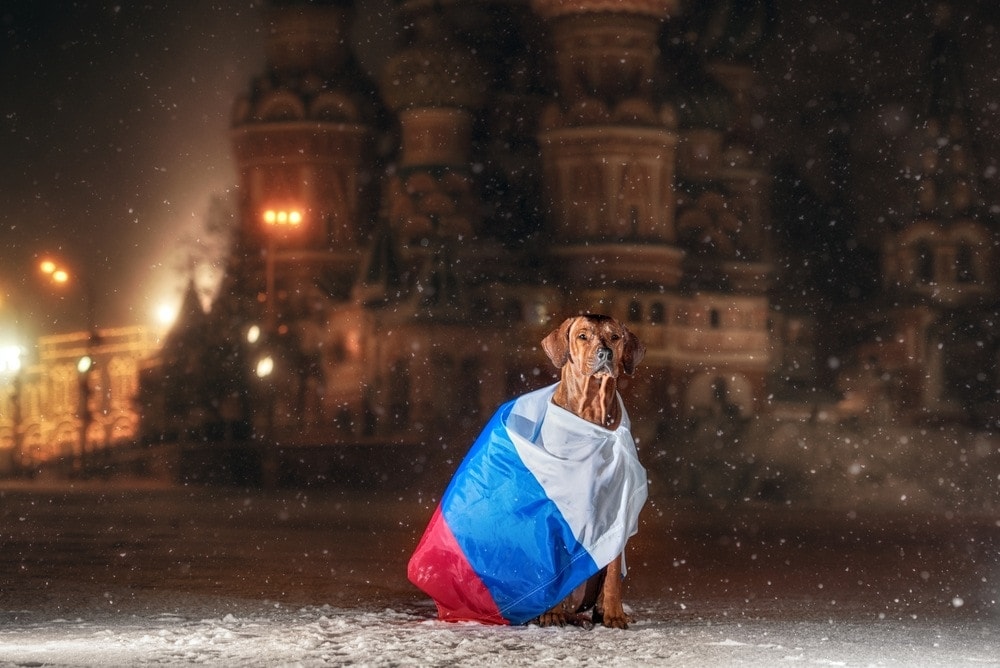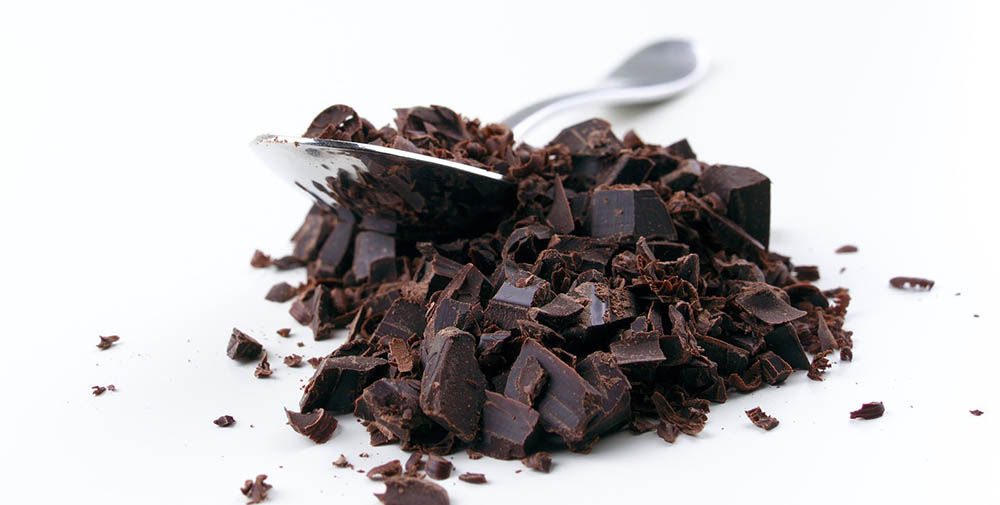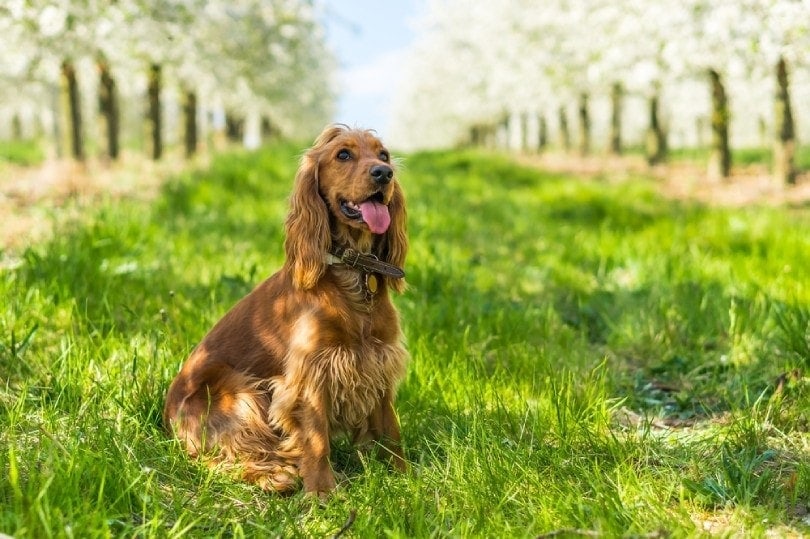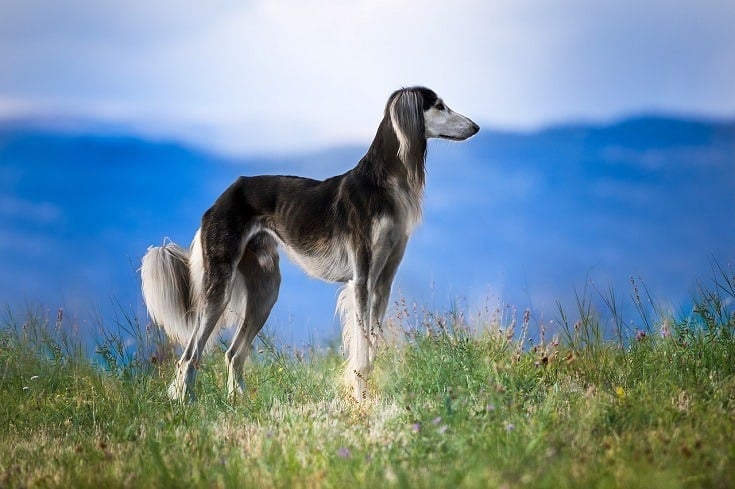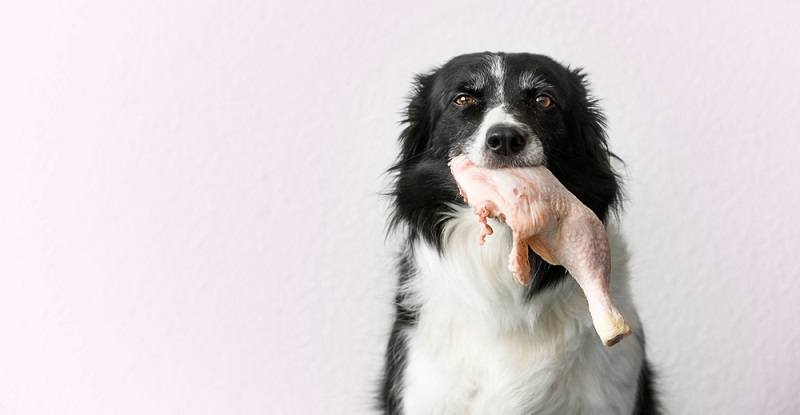It might come as a surprise that there are more Russian dog breeds than the Siberian Husky, the Samoyed, and the Borzoi. The majority of Russian dogs were bred for protection and to live in cold weather, but many of them would make an amazing dog to take home to your family.
Without further ado, we present 15 Russian dog breeds, large and small!
The 15 Russian Dog Breeds:
1. Siberian Husky
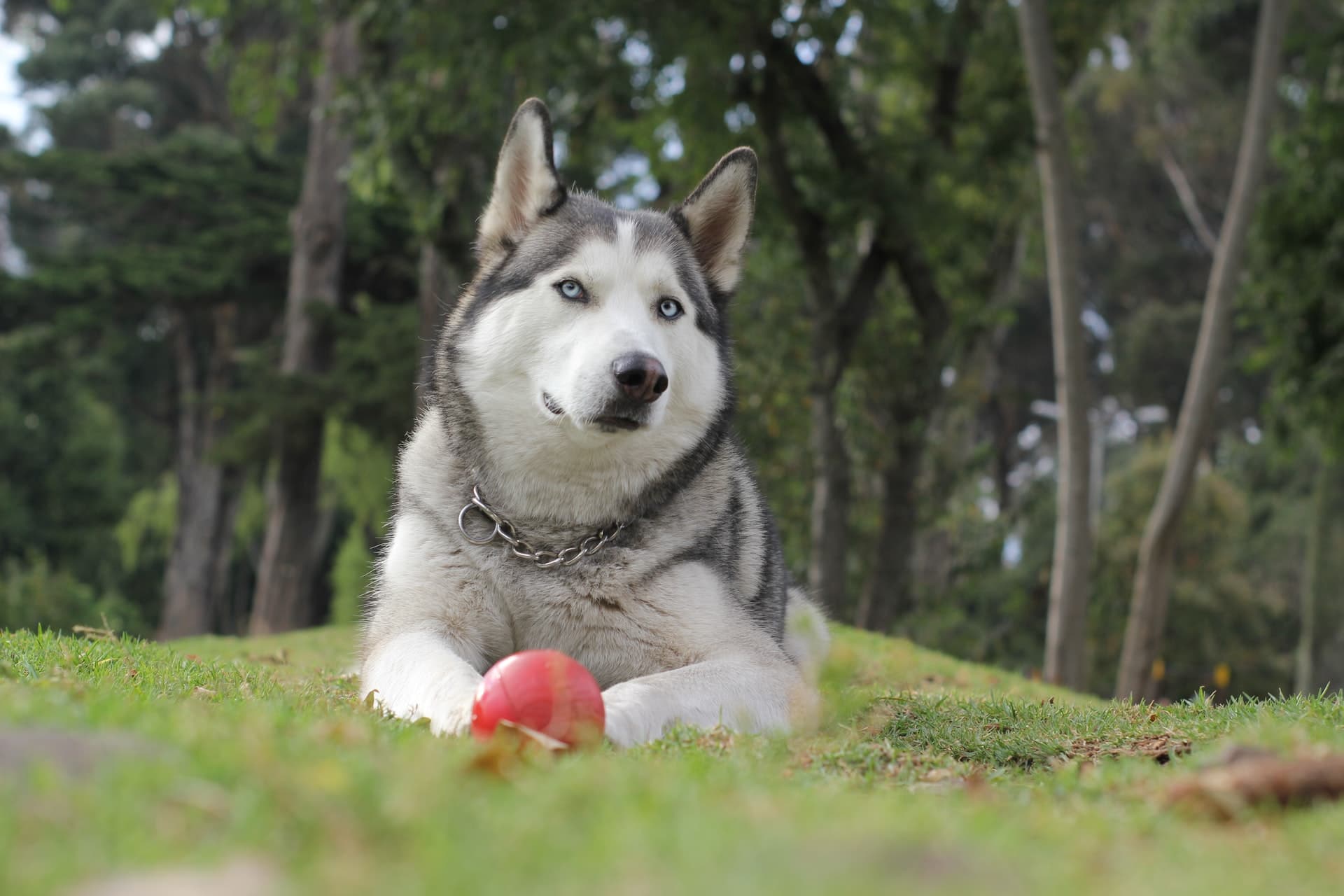
The Siberian Husky is the most popular dog on this list. It is 15 out of 193 on the American Kennel Club (AKC) popularity list1 and belongs in the Working Group. It is thought that the Siberian Husky lineage goes back more than 4,000 years and was bred by the Chukchi people (semi-Nomadic Indigenous people of ancient Siberia) for hunting, sled dogs, and also companions for the families.
The Siberian Husky is an energetic, loyal, and friendly breed that is a pack dog, and therefore, gets along very well with other dogs. They do have a high-prey drive and will chase smaller animals, but their amiable nature makes them terrible watchdogs, even though they are known for being very vocal.
The Siberian Husky has a very thick double coat that only needs a bath several times a year and a weekly brushing.
They are a bit of a challenge to train because they are independent in nature, but they are also intelligent, so persistent and reward-based training should do the trick.
They are working dogs and highly energetic, so expect to exercise the Siberian Husky a great deal every day. This includes activities, such as running and agility trials, in addition to daily walks.
You might also like: Best Dog Foods for Active Dogs
2. Samoyed
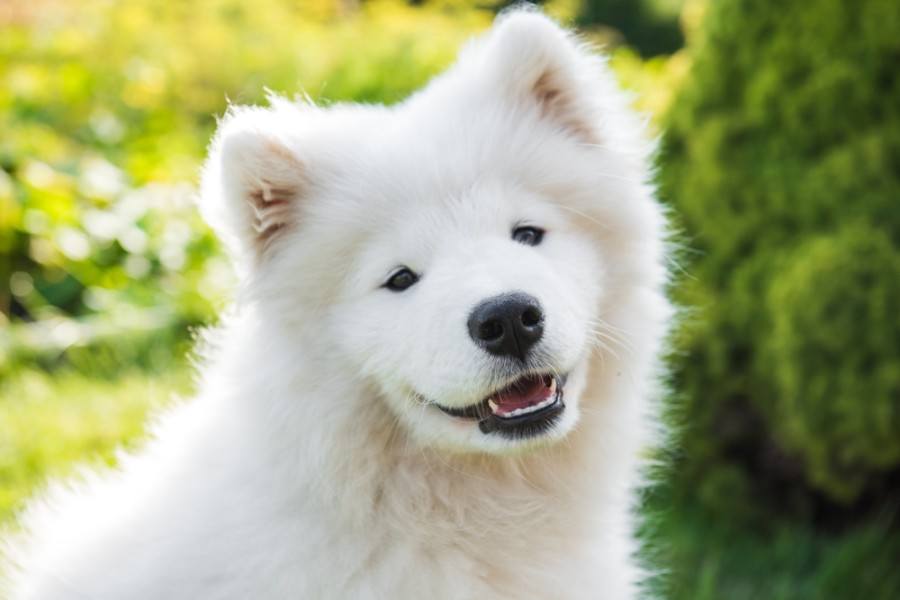
The Samoyed is the 58th most popular dog at the AKC and is also in the Working Group. Similar to the Siberian Husky, the Samoyed was bred by semi-Nomadic people called the Samoyede who migrated from Asia to Siberia about 1,000 years ago. Sammies were bred to be sled and hunting dogs and formed a very close bond with their people.
The Samoyed is a friendly, gentle, and mischievous dog that is highly social and needs a lot of attention. Interesting fact; the Samoyed’s famous “smile” is actually a feature of their muzzle that stops the dog from drooling, which in the cold climate of Siberia, would prevent icicles from forming around the Samoyed’s mouth.
The Sammy has an extremely thick double coat that needs brushing several times a week. Particularly since they shed a great deal but will shed quite profusely in the spring and the fall.
They require a great deal of exercise, including daily walks and lots of time playing with their family. They should always be in an enclosed space or on a leash as they are prone to running away.
The Samoyed has an independent streak but also has exceptionally close bonds with people and, therefore, will train easily with persistence and love but be prepared to spend as much time as possible with these gentle and affectionate dogs.
3. Borzoi
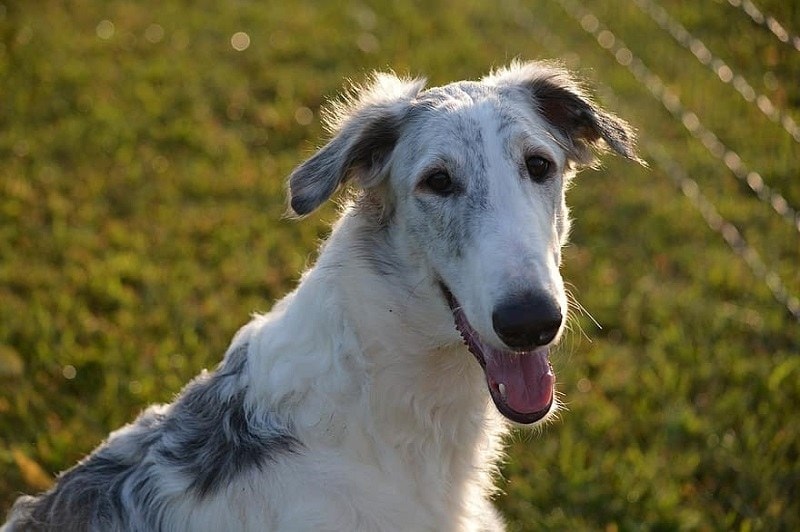
The Borzoi ranks at 105 out of 193 in the AKC breed popularity and is in the Hound Group. Borzoi are also known as Russian Wolfhounds and originated during the Romanov rule (1613 – 1917). They were used to take part in wolf hunting. When the Romanov family were all executed during the Revolution, the Borzoi were slaughtered along with anyone associated with the family. They might have gone extinct were it not for Borzoi breeders in the UK and North America.
The Borzoi is a calm, affectionate, and loyal dog that carries an aristocratic air when running or just curling up at your feet. They don’t tend to play roughly or do anything seemingly undignified, but their high-prey drive will stir them into chasing any small animals.
The Borzoi has a long and silky coat that will need brushing several times a week and a bath only when necessary to avoid stripping its coat of its natural oils. Training the Borzoi can be challenging as they are prone to independence and stubbornness, so consistent training with humor and love is key.
They are energetic dogs that will need lots of exercise every day and should always be in a fenced area or on a leash while out as they tend to chase anything that moves.
4. Black Russian Terrier
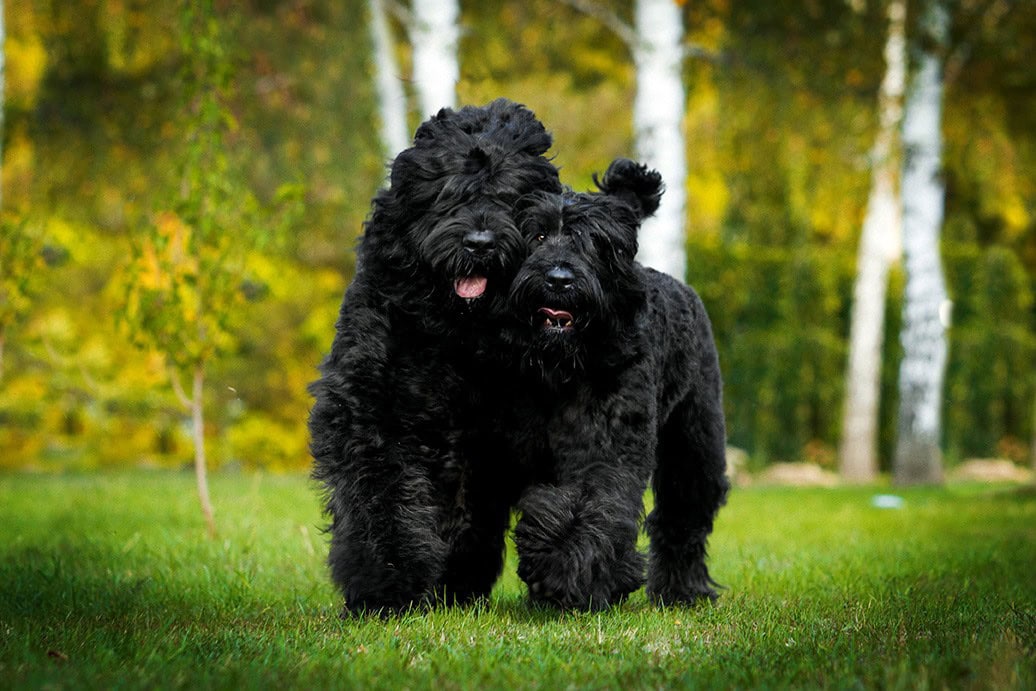
The Black Russian Terrier is 114 on the AKC popular breed list and is also in the Working Group. These dogs have interesting beginnings as they were bred by the Soviet Army at the Red Star Kennel to become a “super dog” for the Soviet Army.
The Black Russian Terrier is a very large and powerful dog that is intelligent, calm, and courageous and is reserved with strangers. Their instincts are to protect their family just as much as relax at home and monitor their environment.
The Black Russian Terrier has a very thick double coat that needs brushing at least several times a week and the occasional facial trim.
They are very energetic dogs that require a minimum of 40 minutes of exercise every day in addition to other activities, including running, swimming, and long runs. Without proper exercise or time spent with its owner, the Black Russian Terrier will become destructive.
Training will be a challenge as they have dominating personalities and will do best with consistent, reward-based training with an experienced owner.
5. Russian Toy
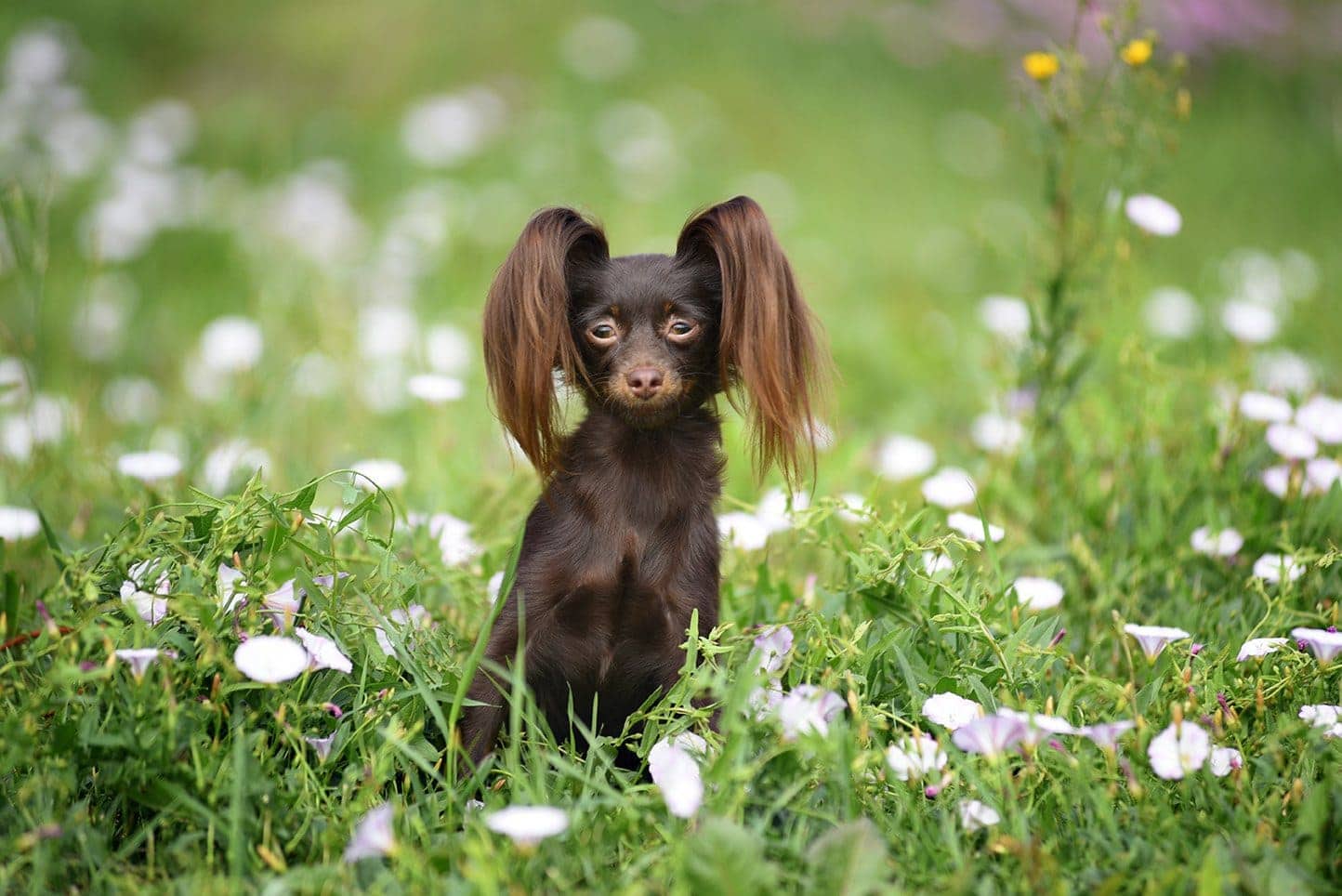
The Russian Toy is a part of the AKC’s Miscellaneous Class, which essentially indicates that these breeds are working their way towards full recognition in the AKC. The Russian Toy has its origins in the English Toy Terrier, which arrived in Russia in the 1700s. The Russian Toy Terrier almost became extinct during the Russian Revolution in 1917, but in 1958, through a variety of breeding lines, a new and unique puppy was introduced and was the origin of the Russian Toy.
The Russian Toy is a small, intelligent, and playful Russian breed that will play all day and then enjoy sleeping on your lap for as long as you let it. They are very devoted to their family but are reserved with strangers.
There are two breeds of the Russian Toy, and grooming will depend on whether you have the smooth-coated or the longhair. Obviously, the smooth-coat variety is much lower maintenance. It needs a weekly brushing as compared to brushing the longhaired 2 or 3 times a week.
They are moderately active and will require regular exercise, but short runs (even in your apartment) will suffice.
Training will be easy thanks to their eager-to-please nature and intelligence but can also be a challenge due to their stubbornness.
6. Russian Tsvetnaya Bolonka
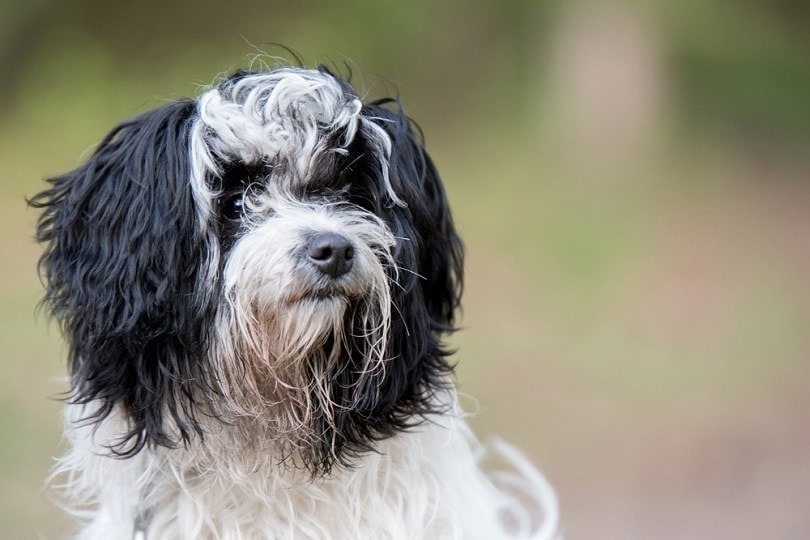
The Russian Tsvetnaya Bolonka is a part of the Foundation Stock Service (FSS), which allows record-keeping for breeds that are not currently registered with the AKC. The Russkaya Tsvetnaya Bolonka translates to “Russian Colored Lapdog” and originates back to the 1700s as a gift to Russian nobility from France’s King Louis IV. Russian toy dogs were not common until that time because of the cold climate and the need for healthy working dogs.
The Bolonka is a playful, sweet-natured, and intelligent small dog devoted to its family and absolutely loves children. They get along very well with other animals but are independent, which isn’t typical of the toy breeds. The Bolonka is very affectionate and charming and makes the perfect dog for a family living in an apartment.
The Bolonka is hypoallergenic and has a long coat that will need brushing several times a week and might need facial trimming on occasion.
They need daily exercise and are energetic, but they don’t require a lot of exercise. Short brisk walks and playing games such as rolling a ball and learning new tricks should keep them happy and healthy.
Their independent nature makes training a challenge, but early socialization and training with gentle persistence should work well for the Bolonka.
7. Caucasian Shepherd Dog
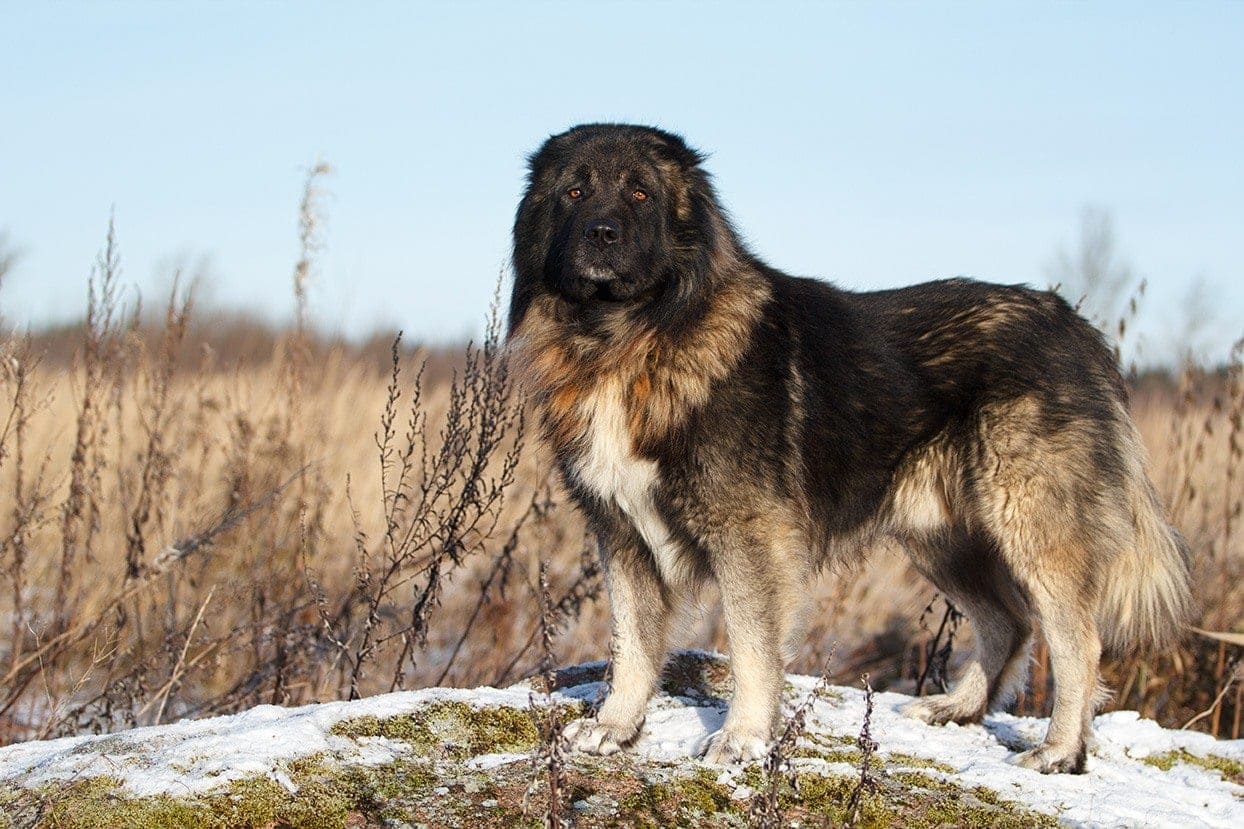
The Caucasian Shepherd Dog is a large dog in the Foundation Stock Service of the AKC and originated in Eastern Europe’s mountain range of Kavkaz (Caucasus). It was bred in these mountains for guarding and protecting flocks of sheep, and many are used as guard dogs at Russian prisons today.
As a guardian dog, the Caucasian Shepherd is highly protective of its family. It’s quite difficult to bring strangers (adults, children, and other animals) into the home without this breed becoming aggressive. They are incredibly loyal to their family (their pack) and can be kind and sweet, even towards family pets. However, it takes a very experienced owner with a firm hand to handle the Caucasian Shepherd.
Grooming the Caucasian Shepherd includes brushing it at least 2 or 3 times a week (the long-coated breed will need daily brushing), and they tend to shed frequently.
They will do best in a house with a large yard and long daily walks and hikes.
Training is a challenge as they are highly independent and intelligent, so lots of patience and positive reinforcement will help.
8. Central Asian Shepherd Dog
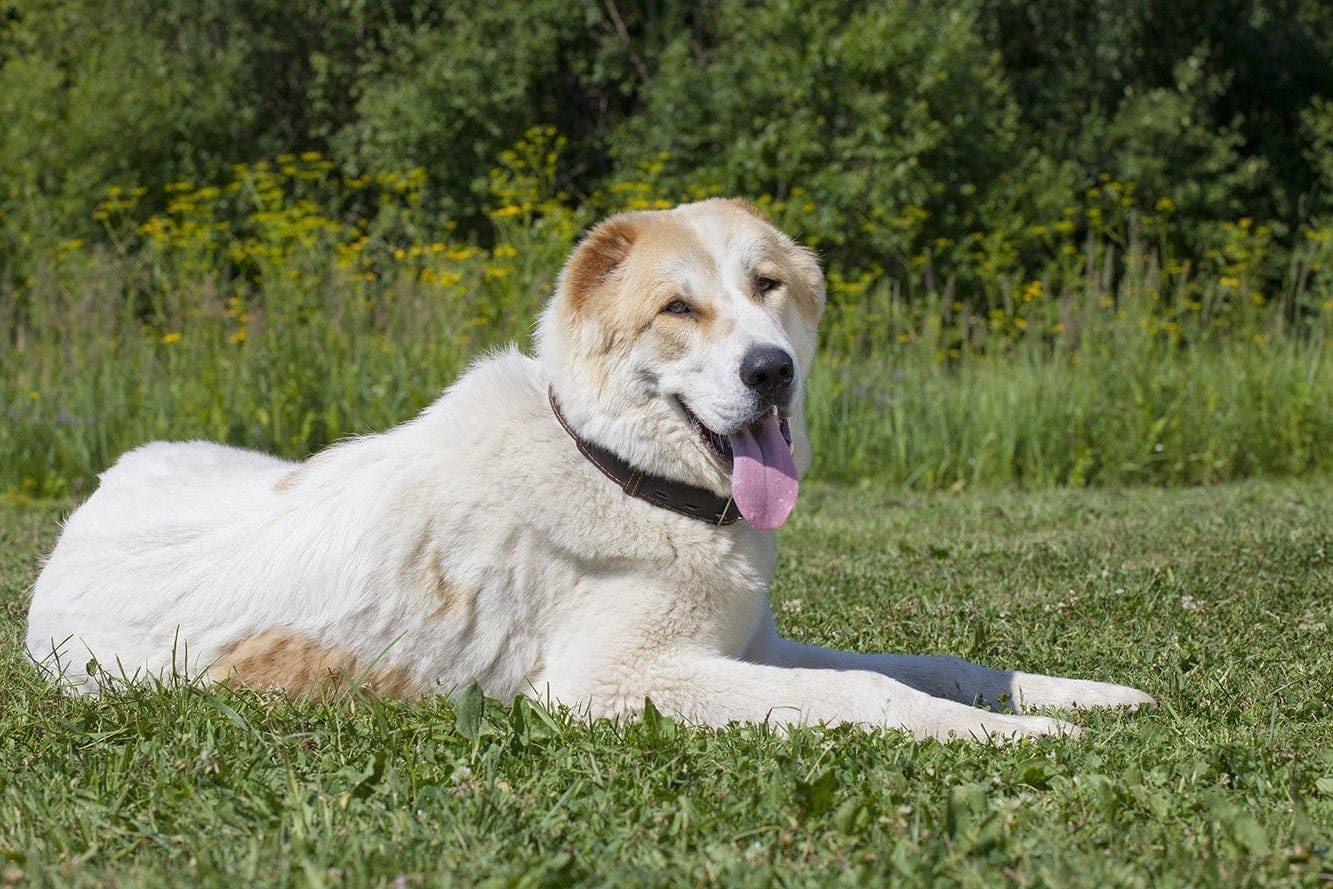
Another breed in the AKC’s Foundation Stock Service, the Central Asian Shepherd Dog is considered one of the oldest dogs today (going back 5,000 years). This breed was not bred or created by anyone; they evolved through natural selection. They were used as guardians for livestock as well as their families.
The Central Asian Shepherd is an independent, fearless, and quiet dog that would benefit from an experienced dog owner. They are large, powerful dogs that, like the Caucasian Shepherd, are very protective of their territory and family and don’t take to strangers. They are active outdoors but quiet and calm when inside.
The Central Asian Shepherd is quite low maintenance with respect to grooming as they might only need brushing about once a month. However, they shed profusely every spring and will require more frequent brushings at this time.
While they are calm dogs, they need a fair amount of exercise and will do best in homes with large yards.
They are challenging to train given their intelligence and independence, but persistence and a firm but gentle hand will help.
9. Yakutian Laika
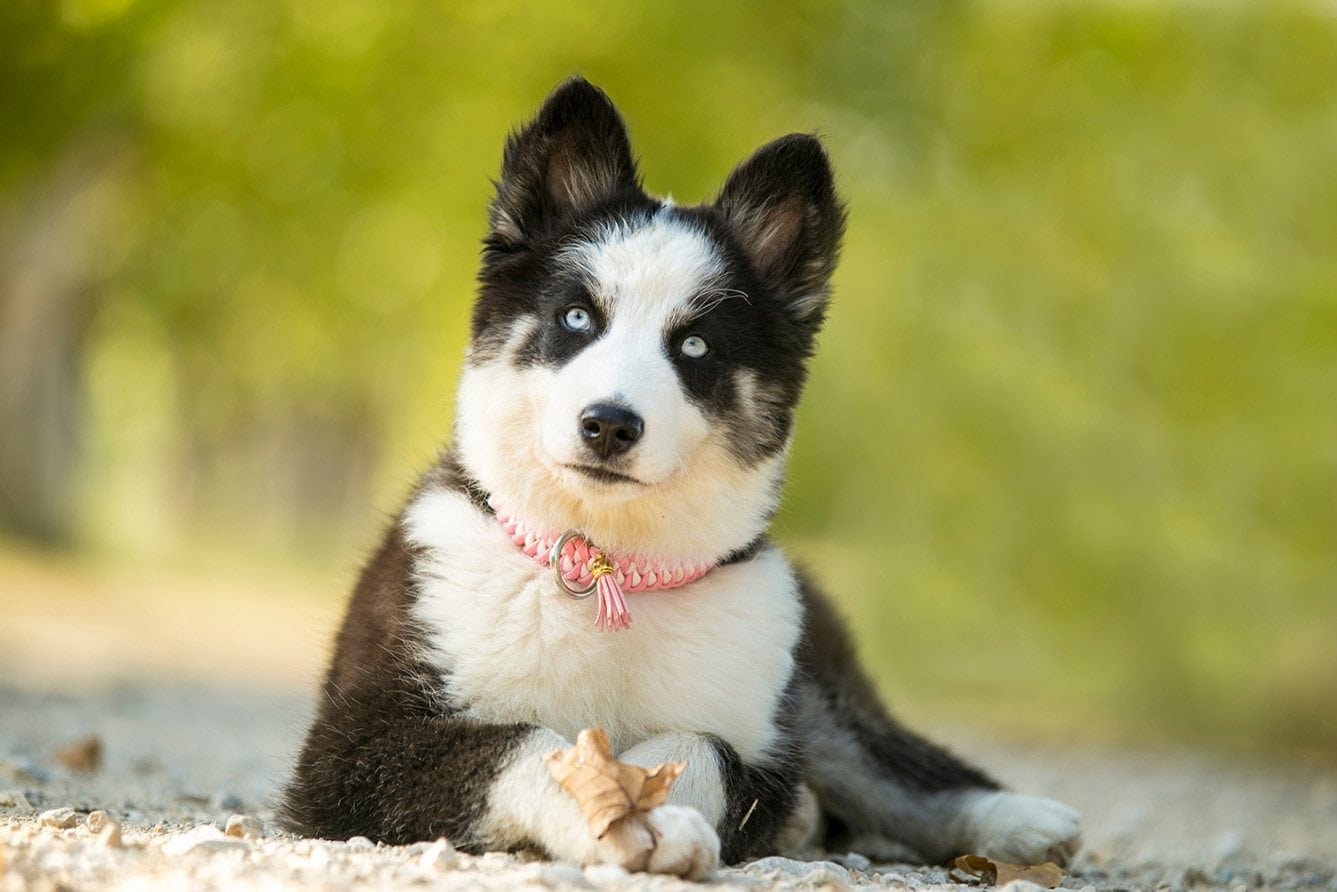
The Yakutian Laika is another Foundation Stock Service dog at the AKC and had its beginnings in the Yakutia region in Siberia. The Indigenous Yakute people used the Yakutian Laika as family pets and for herding reindeer and hunting. They were some of the first dogs to pull sleds.
Yakutian Laikas make tremendous family dogs as they form strong bonds with children and get along very well with other dogs. They have a high prey drive and might chase smaller animals, but if they are raised with a cat, they can form a friendship. The Yakutian Laika is affectionate, devoted, and gentle.
The Yakutian Laika should be brushed about once a week but tend to shed heavily in the spring and fall and need to be brushed every day at these times.
They are energetic dogs that will need lots of regular exercise, and they shouldn’t be left alone for long periods of time.
They are relatively easy to train because of their intelligence and obedient nature but be aware that they are rather independent dogs and are wary of strangers.
The rest of this list is Russian dogs that are not registered through the AKC but are a part of the United Kennel Club (UKC) and the Continental Kennel Club (CKC).
10. South Russian Shepherd Dog
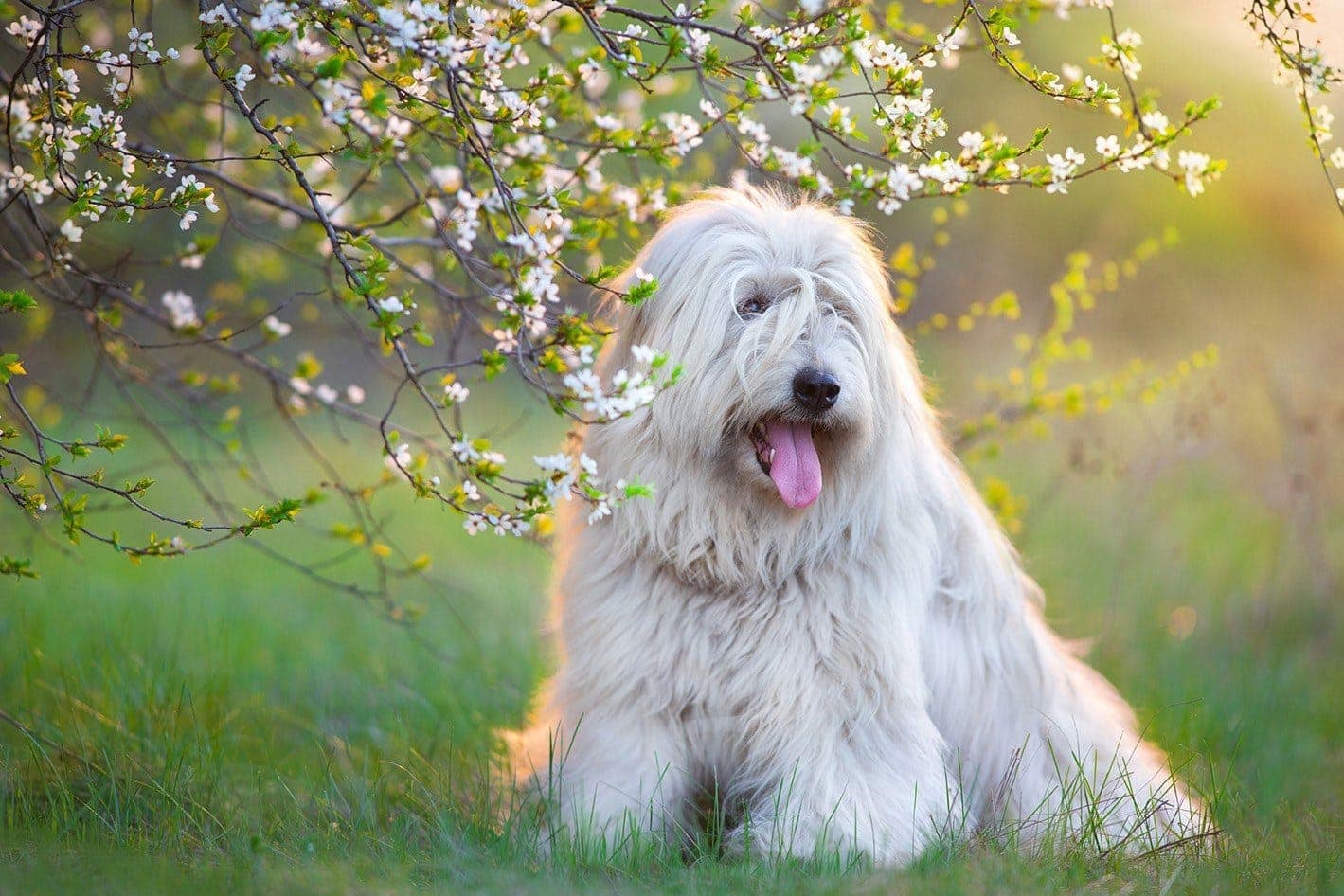
The South Russian Shepherd Dog is also called the South Russian Ovcharka and they are part of the UKC’s Herding Dog Group. It is believed to be a descendant of the wolf combined with sighthounds and other regional shepherd dogs. They were used as herders and guardians of flocks of livestock in the Russian steppes.
The South Russian Shepherd is a very independent dog that enjoys spending time with their family. However, they also do well when left alone and will spend time patrolling their territory. They can be playful and affectionate, but only moderately as their guardian nature keeps them ever vigilant.
The South Russian Shepherd has a double coat that is longhaired and will need a fair amount of grooming to help with shedding and to prevent tangles.
They are high energy dogs that require a lot of exercise and will need a minimum of 60 minutes of daily exercise.
Training, like most Russian breeds, is challenging due to their independent nature, but persistent and firm training and socialization will be appropriate.
11. Russian-European Laika
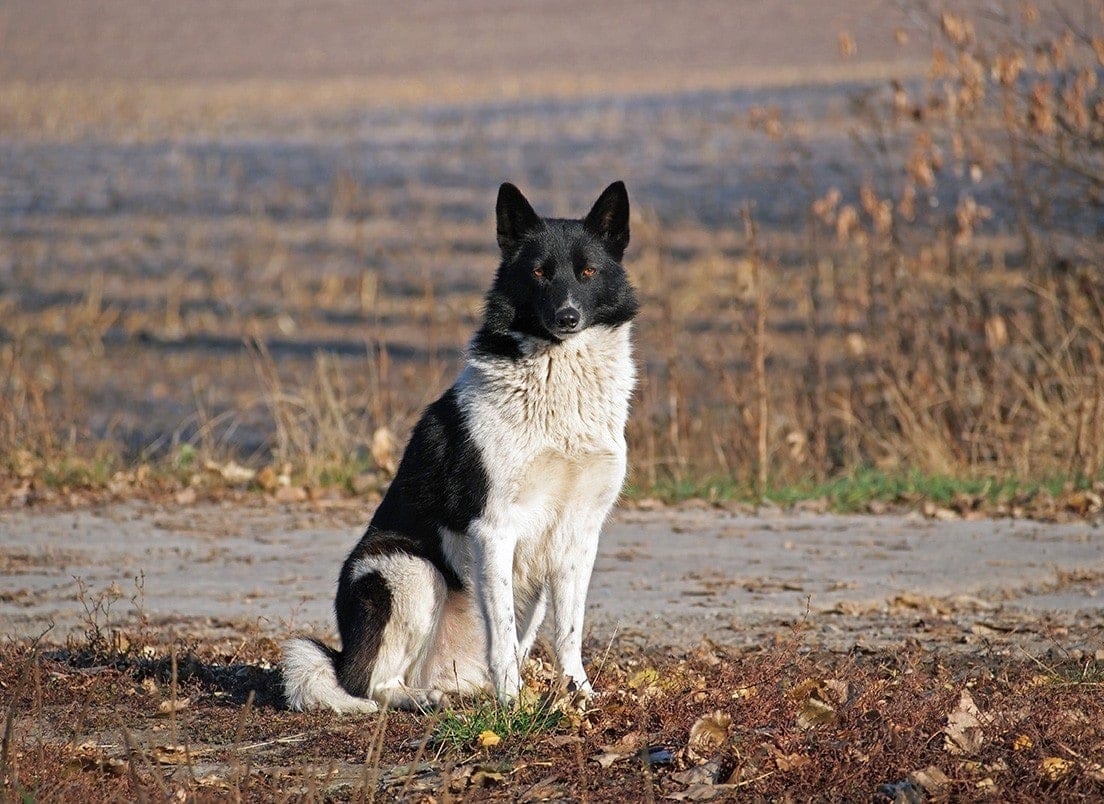
The Russian-European Laika is also called the Russo-European Laika and is part of the Northern Breed Group in the UKC. Their origins began in the area between Finland and the Uralian mountains, and they are the smallest of the 3 breeds of Laika. They were bred to be hunting dogs of both small and large game, but primarily of squirrels.
The Russian-European Laika is a very friendly, affectionate, and loyal dog that gets along very well with children. However, they are very territorial and might be aggressive towards unfamiliar dogs on their property and are wary of strangers.
Like most Russian breeds, the Russian-European Laika has a thick double coat that will need daily brushing but will only require a bath a few times a year.
They are very energetic dogs that will need at least 60 minutes of exercise every day. They won’t be happy living in a city but will flourish living in the country.
Training is as much of a challenge for the Russian-European Laika as it is for the other Russian breeds given their independent streak. Using firm patience and rewards will provide you with a loving and protective companion.
12. East Siberian Laika

The East Siberian Laika is in the largest of the Laika breeds and is part of the Northern Breed Group in the UKC. They are considered the closest breed related to wolves (along with the other Laika breeds) and were bred to hunt. They are a rare breed today.
They are very loyal dogs to their family and do well with older children, but they are territorial and don’t get along well with other dogs. They actually would do best in a household without any other pets, particularly because of their high prey drive. The East Siberian Laika make excellent watchdogs as they are wary of strangers.
They have very thick, medium-length double coats that will need brushing at least once a week but more frequently when they shed in the spring and fall.
The East Siberian Laika is very high energy and will need long daily walks and hikes to keep it happy but avoid dog parks because of their aggressiveness towards other dogs.
Training, as usual, will be challenging because of their independent and stubborn nature.
13. West Siberian Laika
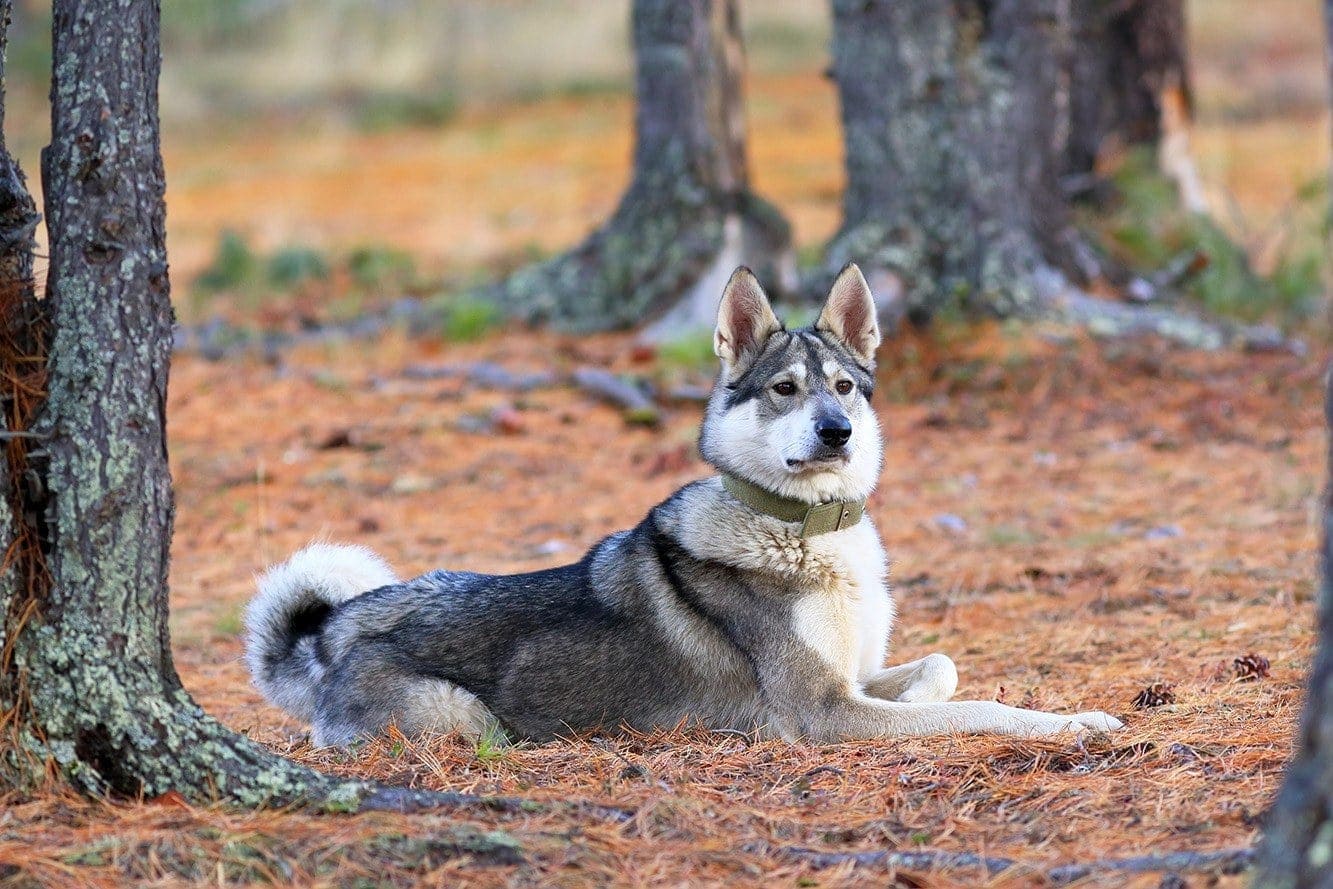
The West Siberian Laika is quite similar to the other two Laika breeds in temperament and appearance and is also in the Northern Breed Group in the UKC. They were also used as hunting dogs and are slightly lighter and smaller in build compared to the East Siberian Laika.
The West Siberian Laika is affectionate and devoted to its family but can also be friendly towards strangers. Like most dogs on this list, they are not suitable for beginner dog owners as they are stubborn and can’t be left alone for long periods, or they become destructive. They are intelligent and eager to learn but have a high-prey drive and would do best in a home without smaller pets.
The West Siberian Laika has a thick double coat that will need brushing at least once a week but will shed like crazy in the fall and the spring and will need daily brushing at these times.
They are high-energy dogs that will need lots of exercise, or they become destructive. They don’t do well in apartments.
Training is a challenge because of their stubbornness, but they’ll pick it up quickly because of their intelligence and loyalty.
14. East European Shepherd
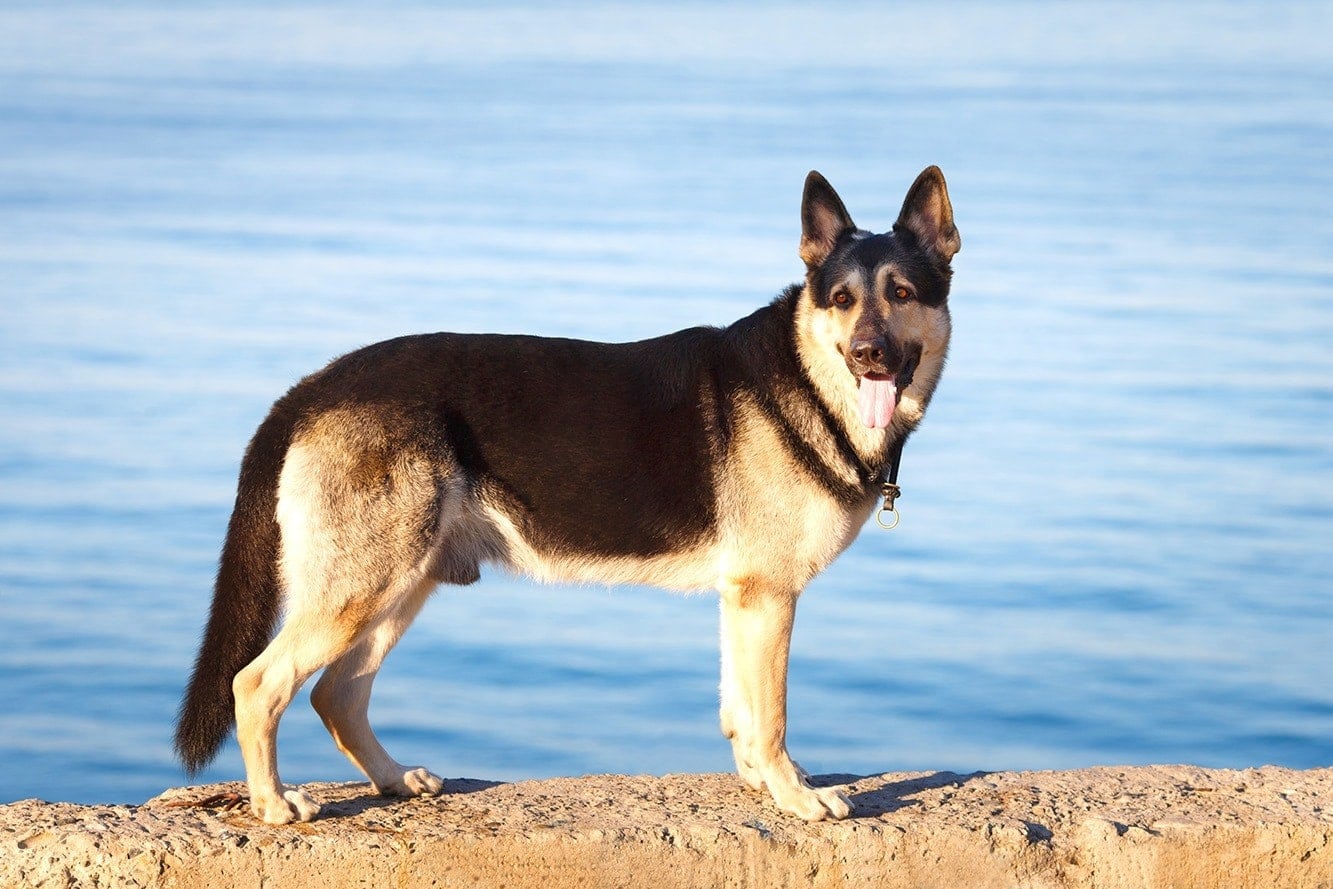
The East European Shepherd is a part of the Pastoral and Stock Dog Breeds from the CKC and, as you can tell from its appearance, was bred from the German Shepherd. The Soviet Army bred the German Shepherd with Russian dogs like the Laikas and the Ovcharkas, and they were established between the 1930s and the 1950s. They were used primarily in the police and military for patrol and in KGB service.
The East European Shepherd is a confident, alert, loyal, and playful dog devoted to their family. They get along well with other pets but need to be raised and socialized with cats. They will otherwise protect every person and animal in the family.
Like most Russian breeds, they have a dense double coat that will need brushing at least twice a week, mainly since they shed most of the time.
The East European Shepherd is a very active dog that will require 1 or 2 long walks every day and will need a house with a large yard.
They are eager to please and intelligent and can be easy to train but with the usual caution towards their independent nature.
15. Russian Spaniel
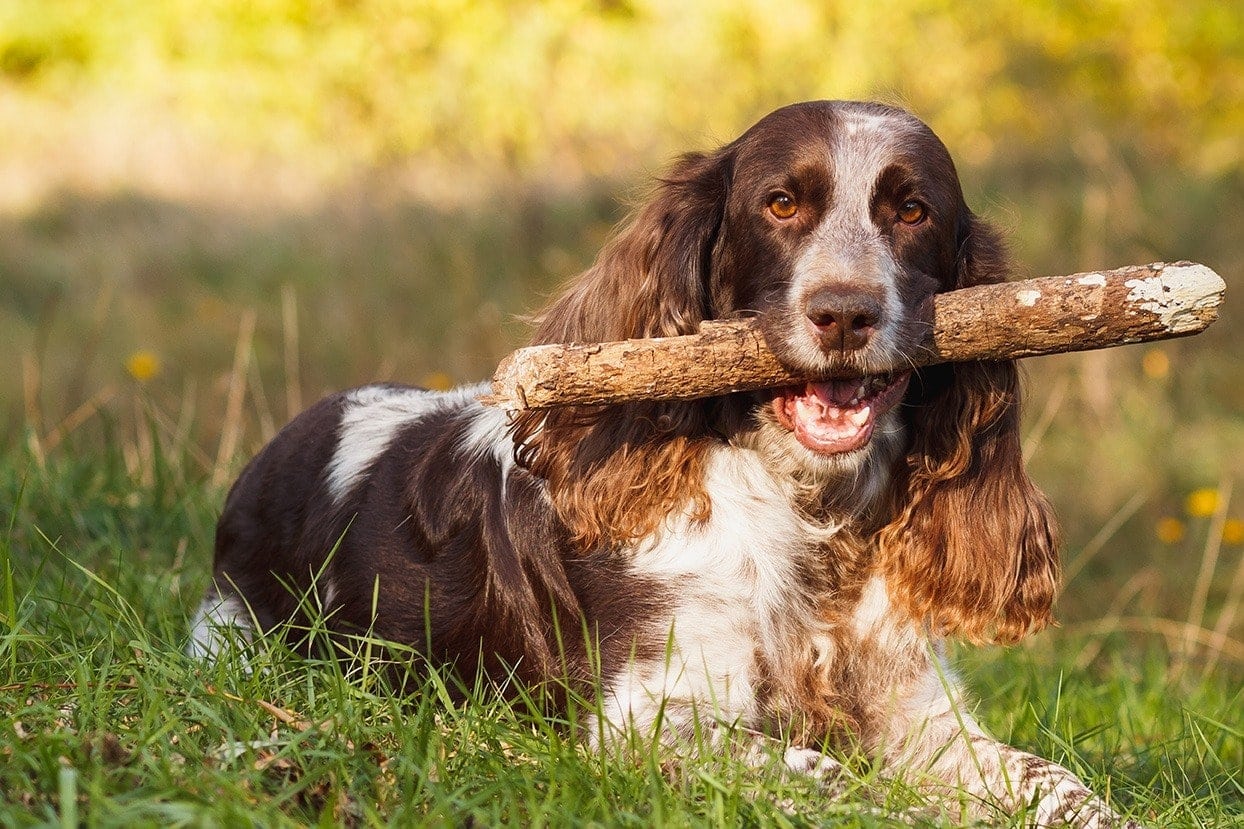
The Russian Spaniel is in the Gun Dog Breed in the CKC breed group and was developed in 1951 in Russia in an attempt to lengthen the legs of Spaniels like the Cocker Spaniel.
They are cheerful and friendly dogs that make great family pets as they are gentle with children as well as other pets. They do have instincts that might make them chase smaller animals, but they like almost everyone they meet.
One of the few Russian breeds without a double coat, the Russian Spaniel has a medium-length coat that repels water and dirt. Therefore, it only needs a few baths a year and brushing several times a week.
They are energetic but will only need an average amount of walks and playtime. As long as they get the appropriate amount of exercise, they could do well in an apartment.
Training is easy with the Russian Spaniel as it is eager to please and an intelligent dog.
Russian Dogs: Conclusion
There are several other breeds of Russian dogs that did not make the list as they were exceptionally rare, or they are extinct (like the Moscow Water Dog). The majority of Russian dogs were bred for frigid weather, so expect a lot of shedding, and many of them are working dogs and have highly independent natures. They are all beautiful dogs, and maybe one of them will be the perfect fit for your family.
Featured Image Credit: DepositPhotos
Contents
- The 15 Russian Dog Breeds:
- 1. Siberian Husky
- 2. Samoyed
- 3. Borzoi
- 4. Black Russian Terrier
- 5. Russian Toy
- 6. Russian Tsvetnaya Bolonka
- 7. Caucasian Shepherd Dog
- 8. Central Asian Shepherd Dog
- 9. Yakutian Laika
- 10. South Russian Shepherd Dog
- 11. Russian-European Laika
- 12. East Siberian Laika
- 13. West Siberian Laika
- 14. East European Shepherd
- 15. Russian Spaniel
- Russian Dogs: Conclusion

